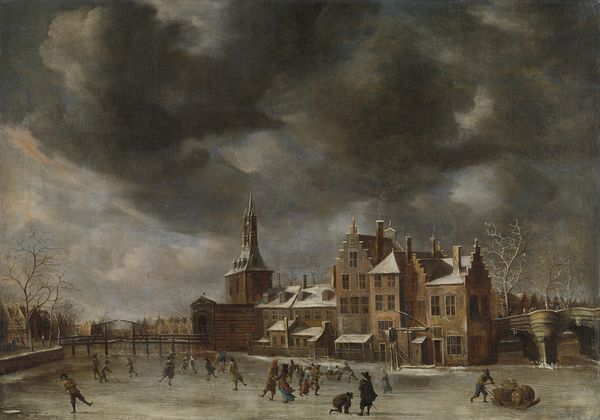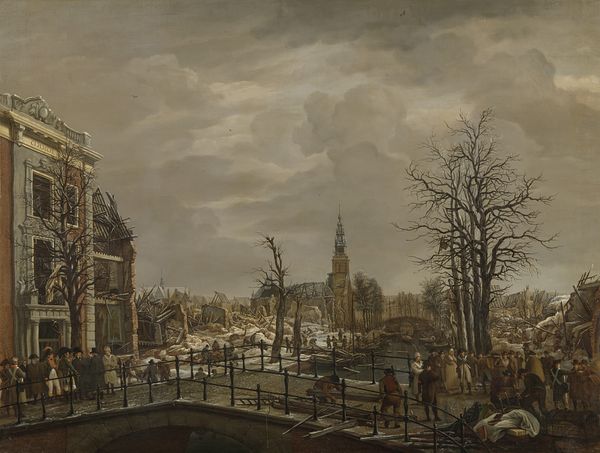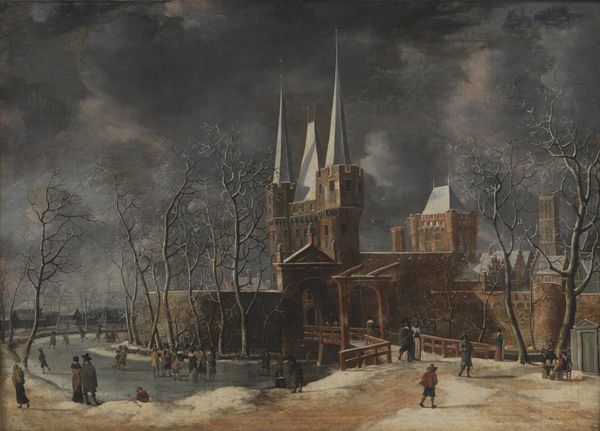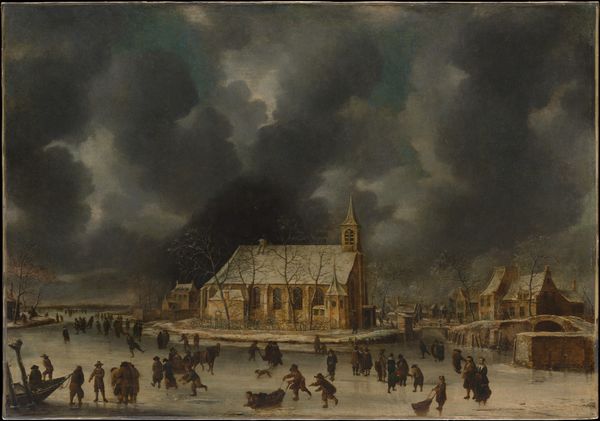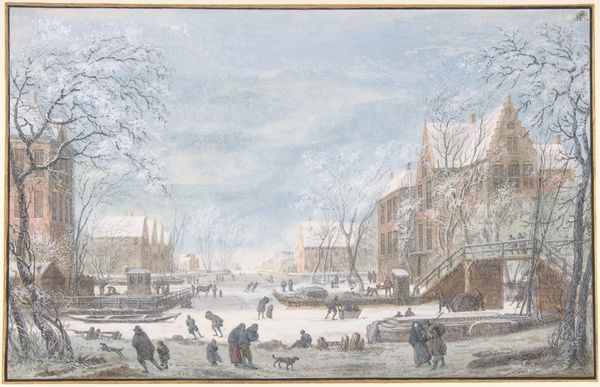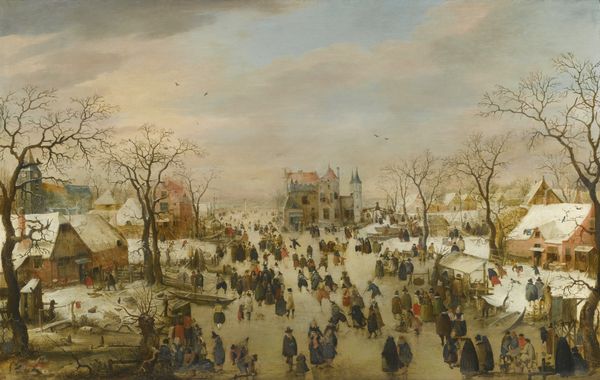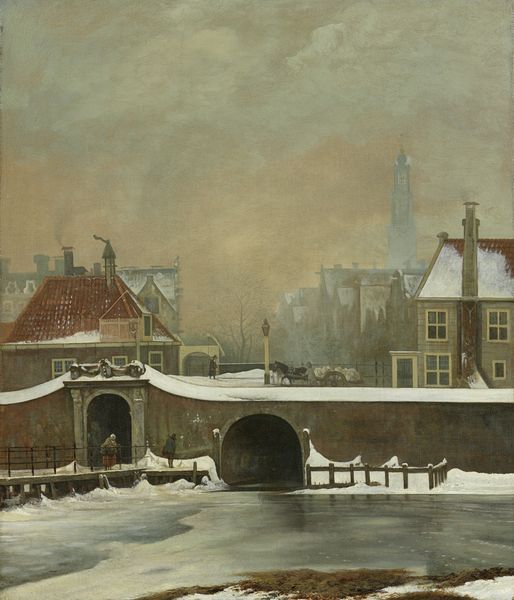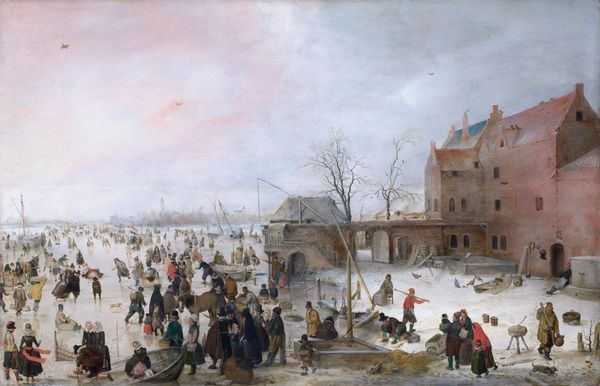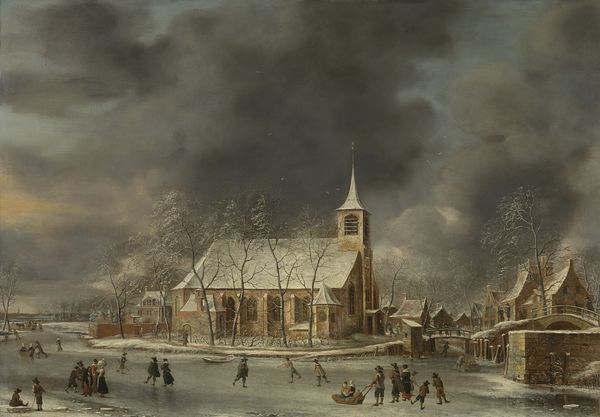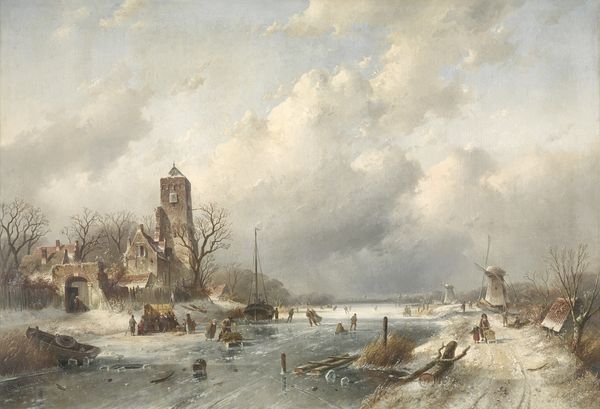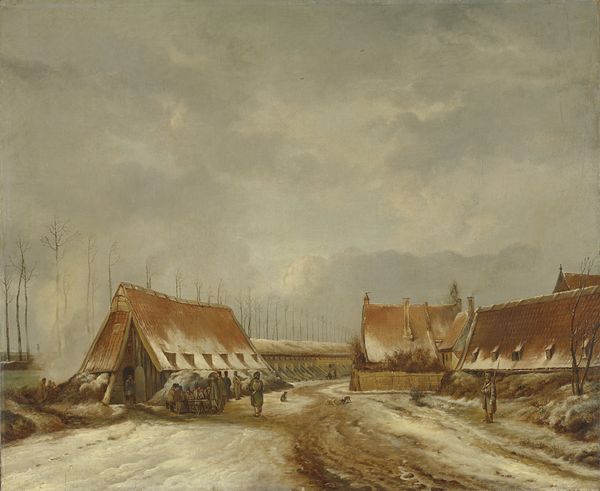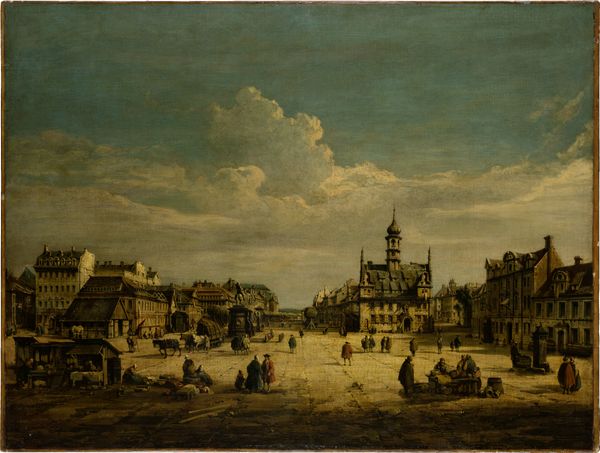
painting, oil-paint
#
dutch-golden-age
#
painting
#
oil-paint
#
landscape
#
oil painting
#
cityscape
#
genre-painting
#
realism
Dimensions: 42 cm (height) x 56 cm (width) (Netto)
Curator: Frans de Momper, painting in the Dutch Golden Age, brings us "Winter's Day in Breda," executed in oil sometime between 1648 and 1651. What leaps out at you, visually, about this piece? Editor: A quiet desolation. Not bleak, exactly, but subdued. The palette is all creams and browns and muted blues, like a photograph faded with time and cold. I find the architecture is very captivating, too. Curator: That subdued palette really captures the specific atmosphere, doesn't it? Momper wasn't just depicting a winter's day; he was constructing a very deliberate image of Breda. You know, Breda had a very symbolic importance at that time, during and after the Eighty Years' War between the Dutch and the Spanish. Its capture and recapture were key moments. Editor: That explains the slight formality. Despite the genre scene playing out, there's something very staged, like everyone knows they're part of this bigger picture. I imagine a city trying to redefine itself, trying to showcase its... well, perhaps not glory, but resilience. I keep coming back to the snow. It feels like it's acting as a buffer, muting the echoes of conflict. Or perhaps concealing something underneath. Curator: Exactly! It’s a powerful symbol of renewal, or maybe imposed forgetting. The composition emphasizes the town square, the figures within it – some working, others perhaps observing. Momper makes it both intimately familiar and grandly historical, like a freeze frame from the long-running play of Dutch identity. Editor: Identity’s an interesting concept here, isn’t it? Those anonymous figures trudging through the snow— are they Dutch or Spanish? Burghers or vagrants? The snow makes them all equal participants of the same landscape, as if national distinctions mattered less against a shared winter sky. I really find beauty in that ambiguity, somehow. Curator: It's a very balanced presentation, really. Thanks to the realism trend gaining momentum back then. And I also wonder, with our modern lens, if we might not be superimposing too much of our own contemporary anxiety on this genre piece of seemingly normal daily life. It looks so calm here. Editor: Maybe, but isn't that the beauty of it all? How paintings made in other eras may look as mirror to ourselves? Anyway, thank you for shining some new light into this Winter's Day, a piece which, one must agree, is not so bleak as it looks after all. Curator: Indeed. Perspective can shift, much like the winter snow.
Comments
No comments
Be the first to comment and join the conversation on the ultimate creative platform.
